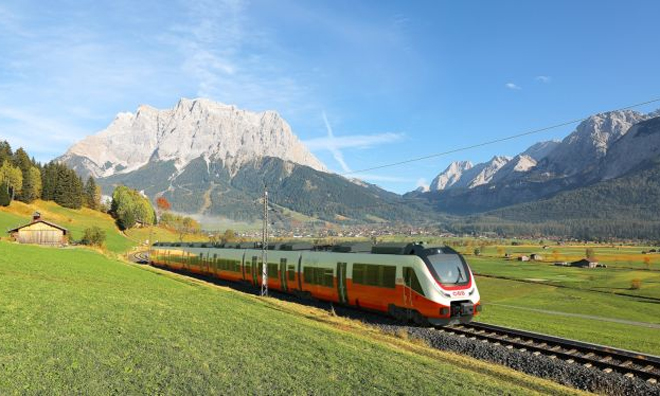ÖBB signs framework agreement for 300 TALENT 3 regional trains
Posted: 3 January 2017 | | No comments yet
On 27 December 2016, Austrian Federal Railways (ÖBB) and Bombardier Transportation signed a framework agreement covering the delivery of up to 300 TALENT 3 trains.


Credit: Bombardier Transportation
On 27 December 2016, Austrian Federal Railways (ÖBB) and Bombardier Transportation signed a framework agreement covering the delivery of up to 300 TALENT 3 trains.


Credit: Bombardier Transportation
The ÖBB has signed a framework agreement for up to 300 Bombardier electric multiple units (EMU). The framework contract is valued at approximately €1.8 billion ($1.9 billion US) and it gives the ÖBB the opportunity to make several call-offs for trainsets used for regional and suburban rail transport.
First call-off order will deliver 21 TALENT 3 trains in 2019
The first call-off order under the framework contract, also signed on the 27 December, is for 21 TALENT 3 trains and is valued at approximately €150 million ($156 million US). These new regional trains are to be delivered in 2019 and are expected to enhance local passenger transport capacity for both daily commute and leisure passengers, strengthening the essential link between rural and urban areas in Austria’s Vorarlberg region and neighbouring countries.


Credit: Bombardier Transportation
Commenting on the order, Christian Diewald, Managing Director of Bombardier Transportation Austria GmbH, said: “ÖBB is one of Europe’s most renowned and punctual railways. With the TALENT 3 train they have chosen a product with high acceleration power and an exceptional reliability, which will help them maintaining their ambitious train schedules in geographically demanding regions.”
The EMUs will offer flexibility, low energy consumption and reduced life cycle costs. Featuring the broadest carbody in its class, the vehicle provides up to 50 percent more seating capacity compared to its predecessor.


